Wow, the Lykoi cat.
What is it? Where did it come from? Why does it look that way?
These are questions that have been asked over and over since the Lykoi started as a breed. I hope to answer these questions and many more in the following story.
History
The Lykoi started their journey to becoming a breed in 2011. The very first Lykoi cat for the Lykoi breeding program was born to Brittney Gobble and myself in the Fall of 2011 to prove these cats were a breed with a unique gene.
The five foundation cats were then all registered together that same year with The International Cat Association(TICA). Since then, the work of multiple breeders, pet owners, and loyal fans have elevated the Lykoi to an almost rockstar status.
Development of the Breed
During their 5-year journey, there have been several accomplishments that the Lykoi have completed to make them different from other breeds of cats and unique in their journey.
First, all the foundation Lykoi used to start the breed are from strays, shelters, or feral colonies. It is a natural occurring mutation in the domestic house cat that can appear from time to time.
The gene has appeared in all corners of the world, and 17 of these naturally occurring mutations have been incorporated in the program.
This playfully earned them the nickname “second chance breed” since they all started from rescue cats that may not have survived without our help, and many of which were dropped at shelters due to people not realizing how special they were.
Second, they have received grants for research into their genetics, skin, and hair. There is a team of scientists (geneticists, dermatologists, etc) continuing to collect data on the Lykoi to explain the interaction the recessive gene has on their color, hair coat, and the hairless pattern they develop.
Third, they were passed to Championship status in TICA in the fall of 2016. That means they can be shown in competitions with every other breed of cat, as of May of 2017.
That hurdle establishes them as a breed of cat which is recognized by one of the leading cat registries.
And fourth, with the help of many of the Lykoi breeders, TICA members, our researchers, our genetic diversity with so many foundation cats, and our kitten owners, the Lykoi have developed into a very healthy, beautiful breed that many people can enjoy.
Appearance
People have said the Lykoi are ugly but many say they are absolutely beautiful. The Lykoi have a gene that is unique to the breed that causes not only the roan pattern (an intermix of normal color hair with white hair), but also the pattern balding of the hair coat.
We have seen many cats that have similar characteristics to the Lykoi, but we have found that the cats must have both the partial hair coat look and the roan color pattern to be a Lykoi.
The kittens are born with a normal coat and look the same as any other normal kitten. They have no balding or roan coloration.
Then, after about one to two weeks, the kittens begin to lose their coats and start appearing fluffy. They can lose their entire coat during this process.
Then after a few weeks the Lykoi coat starts growing in. Typically, by three to four months old, the kitten will have its complete Lykoi appearance.
This Lykoi coat looks like it would feel stiff or like bristles, but it actually is very soft and silk-like. People are always surprised by the coat softness when they actually pet the cat.
The coat is not always stable. That means that the cat could shed the entire hair coat and then regrow a new one that is more coated or less coated.
After this molt, the roan coloring can also change, which makes them appear more black to more white. There are certain lines that are more stable than others. That is why Lykoi cats can look so different from one another.
Some may look more naked like a Sphynx, while others can look almost completely coated. Some have better masks, and some have thicker coats. The Lykoi do keep some characteristics more consistently.
The ears and nose are always hairless, there is roaning in the coat, and the feet are sparsely haired. These characteristics do not change no matter the extremity of the molt.
Their coat color can be any color that a normal cat can be. The black is the standard which is the color that most people see and recognize as the werewolf cat. Black roan is also the only color that can be shown.
Special Care Hair Coat and Shedding
Even though the Lykoi are a special breed, they do not require different kinds of special care. Since they originate from the domestic cat, they are treated like a domestic cat. They can eat normal cat food, use the same litter and litter box, and stay in the same bedding as normal domestic cats.
They do have some special requirements when it comes to washing though. Due to their partial hairless coat, some Lykoi will accumulate oils on the nails and inside the ears.
Simply wiping the nail with a cloth and regular ear cleaning when this happens is all that is needed. They also have to be protected from the cold and the sunlight since they have more skin exposure than a normal cat. Lykoi skin has been known to tan in the summer and the hair coat thicken in the winter.
We have seen stray Lykoi from feral colonies in many situations where they live outside in the winter with no problems and in the summer with no burns. Lykoi cats also shed like normal cats.
They are not hypoallergenic and most people with allergies to cats will have allergies to Lykoi. A small number of people that have allergies claim their Lykoi cat causes no problems with their allergies, but this is not enough for me to say cat-allergic people can have one. Other than that, just simply loving a Lykoi is what is left for their care. Most people consider them normal cats with a werewolf look.
Behavior
The behavior of the Lykoi is slightly different than other cats. Like other cats, they enjoy having people around, they love to be petted, and they love play interaction with people. They are not always a lap cat. They will sit with you for some time, but then they get curious about other things and get up to go exploring. We have seen Lykoi have guarding behavior over children and other cats.
It is as if they feel like they are the king of the home and it is their duty to watch over everything. We have seen Lykoi play fetch, learn to use a toilet, stand on their hind legs, and use their front paws like hands to reach under things.
We even had one during play carry an item in its paws as it hoped across the floor on its back legs. They are full of energy which seems to only run out briefly just to start over again. When there are multiple Lykoi in a room, they tend to play and track like a pack.
We have had litters playing when one smells something to investigate and every sibling decides to follow with their tails up and erect like a pack of wolves after a scent.
Their behavior is why many people have called them a more dog-like breed compared to many other cat breeds. But, in the end, they are still cats, and you will see much of their lives acting like house cats.
Getting a Lykoi
People see them, read about them, and then ask “How do I get one?”. Getting a Lykoi is not as hard as it used to be. People started wanting them when they first saw them in 2011.
There were no kittens born that could be placed in pet homes. Now, most breeders will have kittens available for pet homes. It is still very limited.
There are less than 150 standard Lykoi in the world, and that number includes both pets and breeding animals.
Even though it is a new breed, there is already fraudulent advertisement and sales of cats that are not Lykoi.
Some people will claim to sell you a cat and then disappear as soon as they have your money. I would advise that anyone interested in owning a Lykoi should get in touch with a breeder, talk with them, and then decide if you want to get a Lykoi.
I want to thank everyone that has supported the Lykoi over the years, especially our dedicated fans. Without our fans, we would not have the positive support to bring this beautiful breed to the world.
About the Author:
Johnny Gobble is a practicing Veterinarian in Vonore, TN USA for the past 21 years. He
lives with his wife, Brittney, and there three children (Ali, Brooklynn, and Obadiah) in
Sweetwater, TN USA.
They have been involved in cat breeding and TICA nearly ten years and have over 20 years of combined breeding experience. Johnny is the co founder, first breeder, and major contributor to the Lykoi Breed.
He is the Breed chair with TICA, as well as being in communication with the researchers for the Lykoi. More than 70% of the Lykoi in the world are a direct result from the work that Johnny and Brittney have done.
Official Website: https://lykoikitten.com/
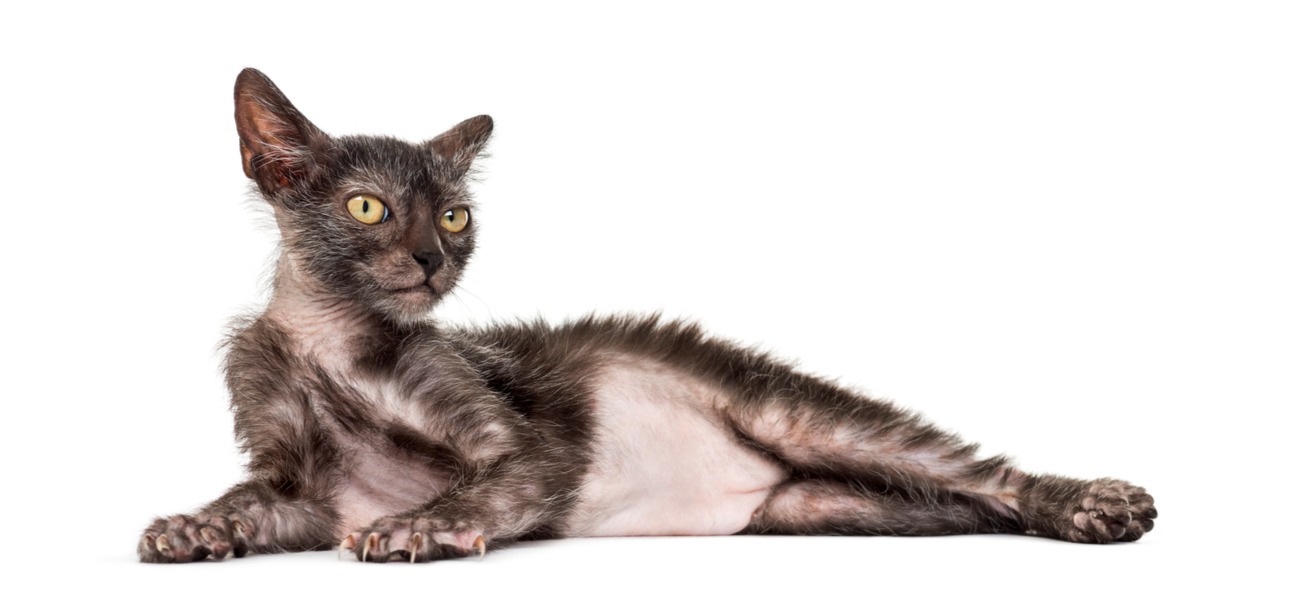
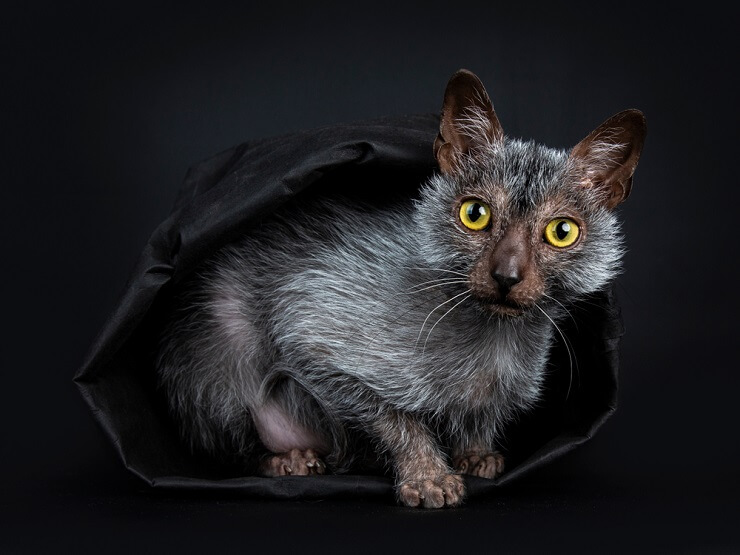 During their 5-year journey, there have been several accomplishments that the Lykoi have completed to make them different from other breeds of cats and unique in their journey.
During their 5-year journey, there have been several accomplishments that the Lykoi have completed to make them different from other breeds of cats and unique in their journey.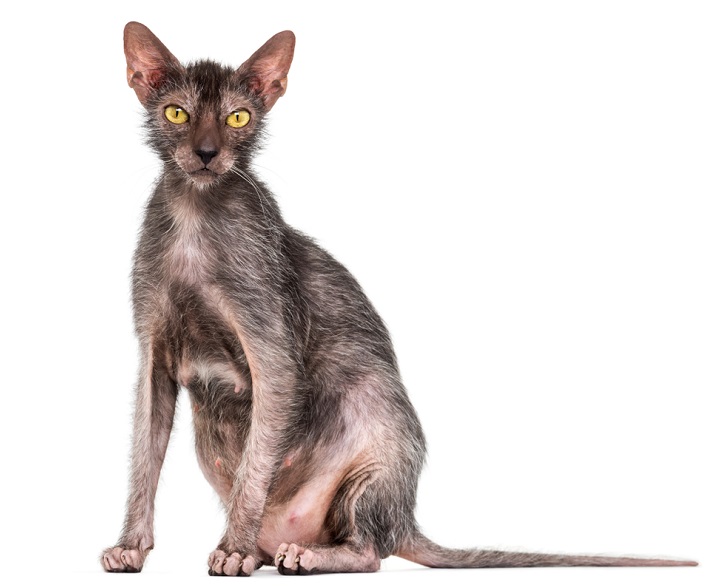
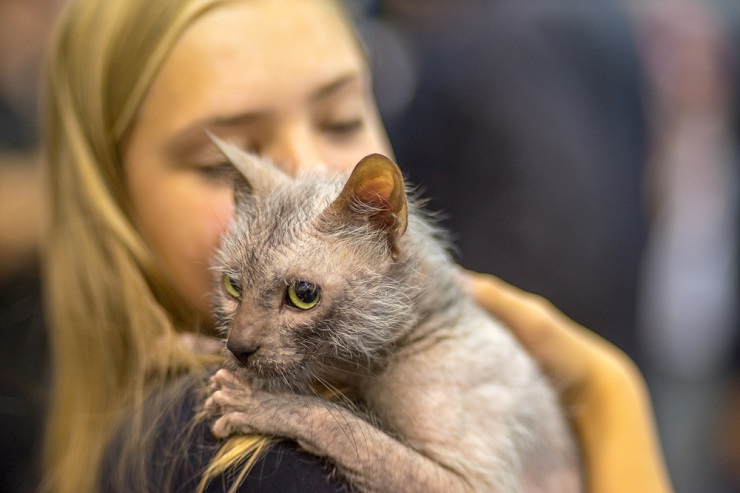 Even though the Lykoi are a special breed, they do not require different kinds of special care. Since they originate from the domestic cat, they are treated like a domestic cat. They can eat normal
Even though the Lykoi are a special breed, they do not require different kinds of special care. Since they originate from the domestic cat, they are treated like a domestic cat. They can eat normal 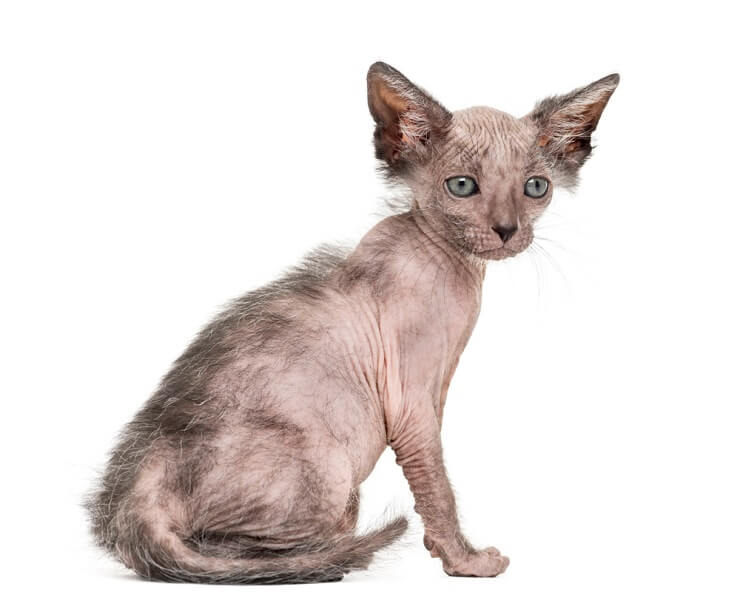 The behavior of the Lykoi is slightly different than other cats. Like other cats, they enjoy having people around, they love to be petted, and they love play interaction with people. They are not always a lap cat. They will sit with you for some time, but then they get curious about other things and get up to go exploring. We have seen Lykoi have guarding behavior over children and other cats.
The behavior of the Lykoi is slightly different than other cats. Like other cats, they enjoy having people around, they love to be petted, and they love play interaction with people. They are not always a lap cat. They will sit with you for some time, but then they get curious about other things and get up to go exploring. We have seen Lykoi have guarding behavior over children and other cats.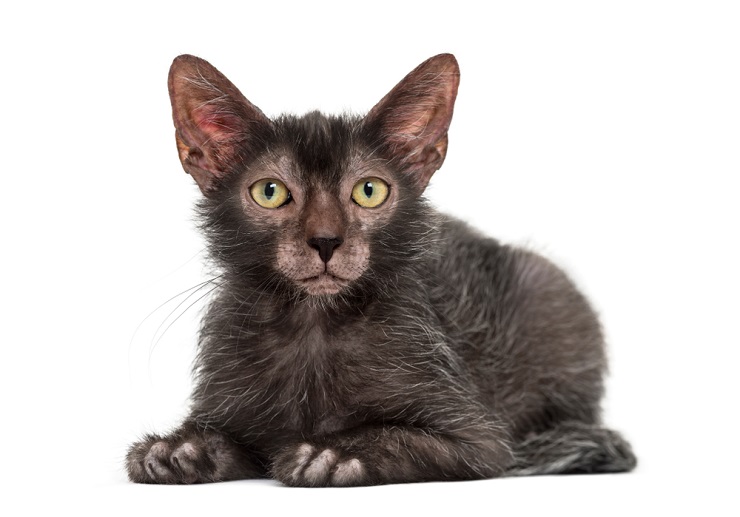 People see them, read about them, and then ask “How do I get one?”. Getting a Lykoi is not as hard as it used to be. People started wanting them when they first saw them in 2011.
People see them, read about them, and then ask “How do I get one?”. Getting a Lykoi is not as hard as it used to be. People started wanting them when they first saw them in 2011.
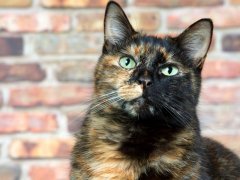

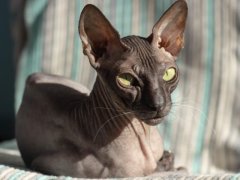
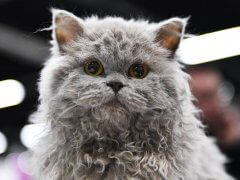
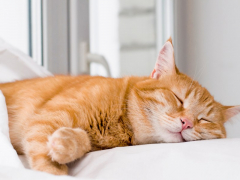

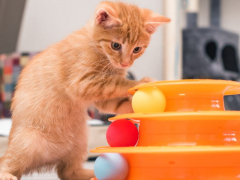
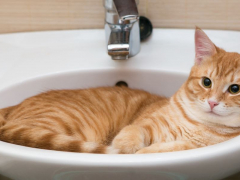
Although I will always adopt strays and rescue cats, I really like the Lykoi breed. If I were to ever acquire one, I would name it Larry Talbot!
What an interesting little breed, normally I am not fond of “creating” an animal, mostly because of health problems that arise, I am only guessing but since this can occur naturally without issues, the cats won’t be suffering like many purpose bred dogs. Very nice to see people who really care about animals and aren’t just doing it for the videos.
Derek, as a Lyoki owner, this breed was not “created.” please read this article again. The Lyoki “breed” is a natural mutation. Natural. Not created, naturally occurring. I have a natural genetic Lyoki that was not bred, it was found at a shelter because the previous owner (she was 8 weeks old when I got her) didn’t know what she was and thought she was sickly. We didn’t know what she was until we contacted Brittney.
Beautiful cat, would love to have one to play with my oriental shorthaired and my tabby
I agree my white short hair and black and white tabby would love to play with one and so would I
How big do they get and what is average weight?
It is not sane develooping breeds on faults of mother nature we have seen where it
leads to . Look at the Scottish Fold a natural mutation where the folds besides lack of cartledge in the ears also lacking cartledge in the body, very painfull. What is it that breeders don’t have enough on the breeds we already have. What do we want with a werewolf type. It is all about the money. And i don’t think it is funny. Especially mixing breeds with faults of mother nature.
You need to work on your reading comprehension and ignorance. First off, it wasn’t “created” by humans through selective breeding, it’s a natural mutation. Secondly, selective breeding isn’t an inherently bad thing. Yes, it’s wrong to use selective breeding can cause harm when bad genetic traits are what they’re bred for, but not all breeding is for that end. Stop virtue signaling to feel good about yourself and maybe do se research before whining with your holier-than-thou bs.
I think they are very cute and I love different tipes of cats:)
They are adorible and I want one sooooo bad And I agree Star
Please help me with something. I found a cat that is a mix of siamese and european domestic cat. A white one with blue eyes and a lykoi mutation. As the rase is a natural mutation how do I get this one registered to be bred?
Hello there! This guide may help: https://cat-world.com/becoming-a-cat-breeder/
I’m starting to think this might be the case with a feral kitten we tried to rescue. Mom had put her kittens in danger, and we were able to retrieve one. We were a bit shocked when we got it out and saw the appearance. We thought it had a skin disease. Sadly the kitten did not survive. But it appeared to be a pointed cat, that had lost its hair, but had some very fluffy tips, like the ears. It was baffling, the coat pattern. Maybe this genetic mutation was the cause. RIP little Lexi.
Could you send me a note letting me know how much they are. I live in Michigan.
Hi Gaia,
We only provide information on the website.
Thank you
So, two people who started doing something 10 years ago, together have a combined 20 years of experience?! Wow!
Thanks for commenting; this is a common figure of speech that doesn’t really stand up to analysis.